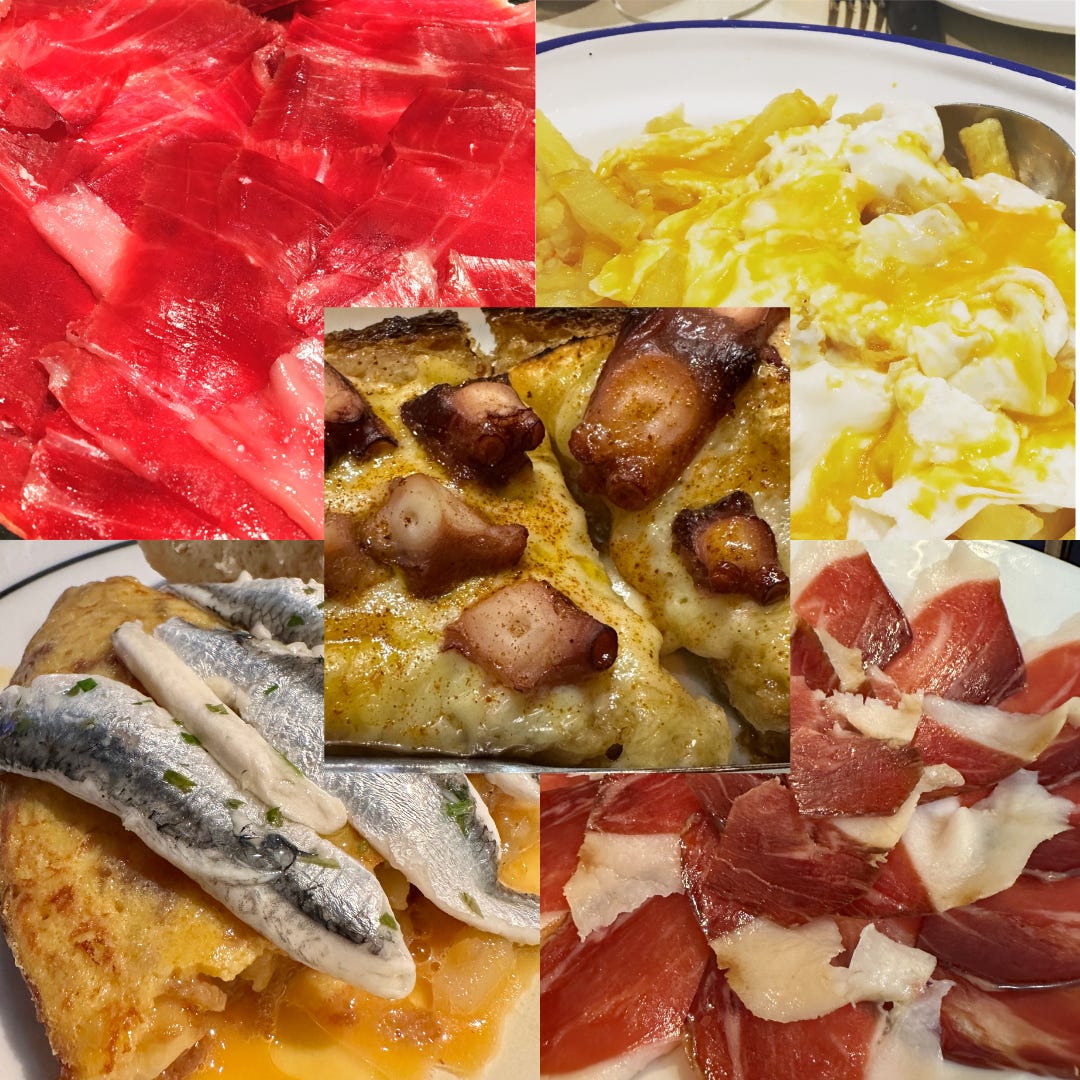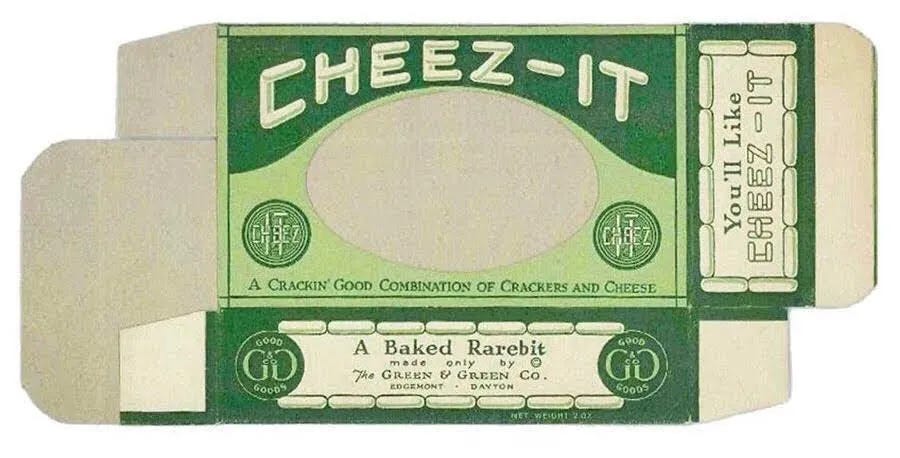I am taking a break from writing my book to write another dubiously researched text on my other loves: food and traveling.
One joy and gift of traveling is to live somewhere, to learn about cultural norms and priorities by spending a bit more extended time in a destination. This leads to a lot of grocery stores, walking around (as fast as possible), museums, and failing at quotidian tasks—I’ll never forget my first experience with a German washing machine. I’ve found that this predilection enhances my ability to articulate ideas of style in music I’m studying, while also honing my ability to notice, parse, and organize the details in music by practicing in the world. After weeks of stimulation and overstimulation (Toledo Cathedral and Sagrada Familia being the main offenders), I’m back from such a trip to Spain and Italy.
It’s not desirable to work against norms, particularly with regard to food, and Spaniards certainly have predilections vis a vis meal timing, construction and judgement. I love eating in Spain, riding the ebullient waves of energy before, during and after meals. However, one detail has always tickled my mind with regard to Spaniards’, and by extension my, criteria for evaluating their cuisine.
It’s sheen-based.
In fact, I would argue the shinier the better. Based on research conducted from age 2 to the present, I’ve organized Spanish culinary mainstays by level of shininess/deliciousness, drawing upon observations and discussions by natives and courteous foreigners.
Top Tier: Sunglasses Required. The Tastiest
Jamón Ibérico: very shiny, radiant, radioactive, reflective, resplendent.
Jamón Ibérico de Bellota: burnished. Inner luminescence. Confident!
Queso Manchego: sheen enhanced by its sweat, which glistens at room temperature.
Other Quesos: your mileage may vary. As observed, best depoyed as a tabla, juxtaposed with something less sun kissed.
Boquerones: Marinated anchovies. Scales vibrating with nitid oil. A winner.
Pimientos de Padrón: Glistening with dew, sheen abetted only by salt crystals.
Pan con Tomato: probably the most shiny breakfast food, and thus a terrific option to jumpstart the day. Extra points because the process of grating tomatoes unveils a lustrous inner lycopene zone.
Salmorejo: Andalusian tomato and bread soup saturated with picante olive oil. I can see my reflection in it.
Fried eggs: eggs, basted in sparkling oil. The yolk advances a few Pantone shades towards “sun.” Top-tier, although rarely found on its own, except for:
Huevos Rotos: Evolution! Fried egg over not-crispy-but-somehow-shiny potatoes. Wow. Seen in high-concept restaurants and late-night stops.
Espárragos: asparagus has two personalities. Green: holds oil like a medieval torch waiting to be lit. White: threatening to de-mulsify. A rare vegetable in the upper tier!
Cochinillo (suckling pig): off the lumens scale. The outside is enbalmed in light, the inside slippery with goo. Cannot be improved.
Mid-Range: Transitional, Wildcards, B-League
Bacalao: A fish of many sheens. Salted and dried —> Brandade —> Croqueta—> Buñuelo—> Cocochas —> suspiciously glowing pinxto. A personal favorite.
Chorizo: Another spectrum:
Fresh chorizo, a Gallego specialty: inner magma.
Spicy chorizo: oily exterior at room temperature, the best exemplars barely holding together.
Salchichon (dried sausage): why bother? Spaniards generally eschew. Rusty, inconvenient.
Morcilla (blood sausage). Dull (but tasty.)
Honorable mention: Sobrasada, a soft-textured sausage from Mallorca. Spreadable, and when topped with honey, glows like my face after visiting the Painted Desert.
Foods Which Make Their Surroundings Shiny
Croquetas: rough exterior, do not let sit on a sheet of paper lest it dissolve.
Buñuelos de Bacalao: don’t touch your phone after one of these
Turrón: another spectrum, this one more complex.
Turrón de Alicante: Almonds suspended à la Jurassic Park. Not worth the effort (or dentist bills)
Turrones de Jijona: left to its own devices, will ooze.
Chocolate Turrón: Meh. Only edible when exposed to heat.
Turrón de Yema Tostada: Now we’re talking! Substitute egg yolks for whites, add a layer of sugar glaze that requires sunglasses to view, allow the interior to achieve saturation. Genius.
Cocido (stew): shiny things, dull broth. Edible in winter, when the bright sun is dulled with clouds, the soul darkened by rain, tomatoes turn to potatoes, etc.
Tortilla: A paradox! Beloved, although dull. Perhaps a foil, like bread (see below)? At times, the inner-most layer oozes, barely coagulated. In its stable form, imbricated potatoes hold the eggs’ lustor back.
Ensaladilla Rusa (Russian potato salad): usually seen as a dull lump. I believe it’s capable of capable of luster in the right hands.
Ensalada de Tomate: the taste of summer, usually with ventresca (tuna belly). More watery than shiny, but can work in a pinch.
Paella: challenging and controversial. Acknowledged as delicious, although described by Spaniards as “dry:” Socarrat literally means “singed.” But, an oiliness remains in the mouth. Paella leftovers become progressively more oily, inversely correlated with tortilla.
Dull, Dry
Jamón Serrano: More satiny than shiny. “It’s fine.”
Bread and Picos (crackers): Every meal needs a Bud Abbott, a Ringo. Not shiny, but required. I’m convinced that the crackers serve to reset the taste buds, much like pickled ginger at sushi restaurants. Omnipresent.
Berejenes (why is the Spanish word for eggplant so unusual?): Palatable generally only via oil-filled cazuela. A wild-card which inspires ordering at a restaurant when it appears.
Salad: vibrant greens are dull. Inedible, unnecessary, avoidable. Served without dressing, hinting at their uselessness.
The Bocadillo: for transitional periods in the day. Lack of shine keeps one focused on work.
Details are indicators of priorities, intentions, and connections. So, what do these details tell us, other than confirming that there are a LOT of olive trees in Spain? While I’m interested in tracing this thread historically (culinary history is fascinating!)
I’m more interested in what I can learn about music through this journey, as it clearly activated the same part of my brain which goes crazy for analysis.
The act of observing and organizing details is critical to our role as interpreters, especially interpreters of such enigmatic and cryptic historical artifacts as musical scores. Building muscle around noticing assumptions via details and connecting those assumptions to larger ideas of style is critical to this endeavor, and is effectively practiced outside of musical domains. For example, let’s say our musical text was the menu of a restaurant. Filtering by shiny might help explain the menu’s organization and give ideas about what an astute diner might order. The knowledge when and how people eat is not as such encoded in most musical texts, and we as performers have to recreate and reimagine those details from other sources and through extrapolation from available information.
It goes without saying that one shouldn’t draw conclusions about an entire culture from one person’s consciously limited experiences in Shine City. But, maybe learning about a localized culture, the unspoken connections that make one place at one time that place and that time can help us build those connections while engaging learning the music of the past.
Other Details
I’ve been spending time assiduously typing up my notes from over 30 museum visits this summer—I’ll share it via a review and rubric—and am excited for recommendations of others to visit.
Cheez-Its, a beloved snack food (also kind of shiny?) was created in 1921 as a frugal version of Welsh Rarebit, cheese baked on toast, with the added benefit of the crackers not growing weevils. It has a fascinating history!
Newsletter
This newsletter is taking on some new to me directions, and I’m splitting the content a bit. I’m going to send slightly more frequent ideas about details and learning, and more infrequent deeper dives into interdisciplinary connections. If you like the longer stories, I’d love it if you subscribed.





Nice catch! I love Buñuel, whose films and collaborations with Lorca were deeply influential. Instrumentation was a joy for me to discover as a kid—I wish more people read it!
Maybe this says more about me than it says about this note, but the writing really reminds me of Buñuel's "Instrumentation" (compare "Boquerones" to "Xylophone"). Good stuff!